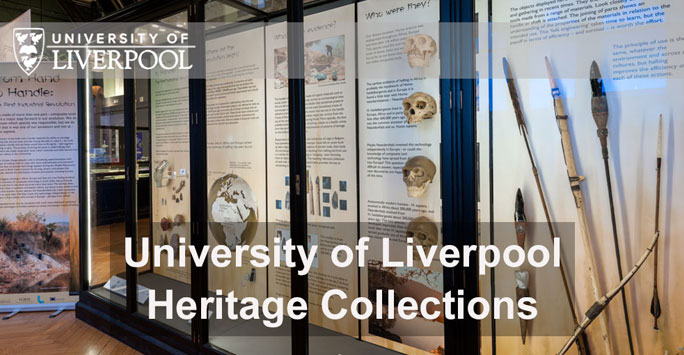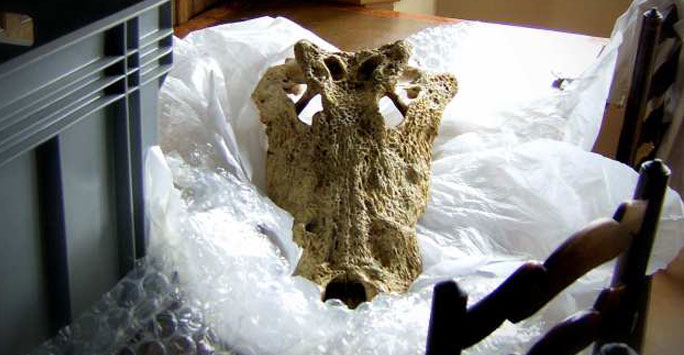
Go behind the scenes at the Victoria Gallery & Museum with Curator of Heritage and Collections Care, Leonie Sedman, to discover the fascinating objects and displays she cares for.
As the Curator of Heritage & Collections Care, I manage the University’s Heritage Collections, working to make them available for research and to develop displays, exhibitions and public engagement inspired by them.
The collections originated in the 19th Century as the contents of more than 10 departmental museums, some - such as the Dental Museum - with collections of international importance. Over the 20th Century, some of the collections were transferred wholly (the Public Health Museum) or partially (Zoology/Physics) to National Museums Liverpool. Fortunately, we have an excellent working relationship with them, so I am usually able to request the loan of items back for display.
Due to the range of subjects represented - from wax and bone teaching models to fragile glass items, fossils, poison arrows, skeletons and taxidermy, I have had to learn about the specialist care needed for a huge variety of objects. Many of these items have been rediscovered within their original departments over recent years, and without the help of the passionate individuals who looked after them, they may have been lost.
The collections represent the history of teaching and research at the University of Liverpool, so consequently reflect many of the discoveries and advances made by its academics. Examples include the world’s first gas and air machine, developed by Dr Robert Minnitt, items used by Oliver Lodge in his radio experiments, Pioneering X-rays by Charles Thurstan Holland from the first few months of their discovery, a Geiger counter given to Professor James Chadwick by Hans Geiger, and type specimens named after Professor William Herdman - whose legacy is the focus of my latest project.

A crocodile skull, awaiting display
William Herdman was Liverpool’s first professor of Zoology and Oceanography, and although too young to go himself, he worked on the publication of the Challenger Expedition (from which we have specimens), a voyage (1872 – 1876) that created the foundations of modern Oceanography. This data is still relevant in science today - for example - in the study of climate change. Herdman founded the zoology and geology departmental museums, which are especially rich in the representation of comparative anatomy and evolutionary discoveries.
I am planning to explore these themes through our exciting new redisplay ‘A Natural History Adventure’ - part of the Dippy Fringe programme from which I gained funding to develop a beautiful, panelled ‘behind the scenes’ room into a ‘Natural History Resource Room’. I have also gained funding from the Bill Pettit Memorial Award to have our gorilla skeleton re-mounted as a centrepiece for the new display, which will also explore worldwide biodiversity and the value of its conservation.
I am receiving invaluable help with this from Robert Connolly, our resident Honorary Research Fellow who looked after the collection before my job existed, and who has an amazing breadth of knowledge. Our zoology and comparative anatomy collections are already an invaluable resource for a number of outreach activities and school groups, but the new display will provide much greater scope for use by not only schools, but also researchers and students.